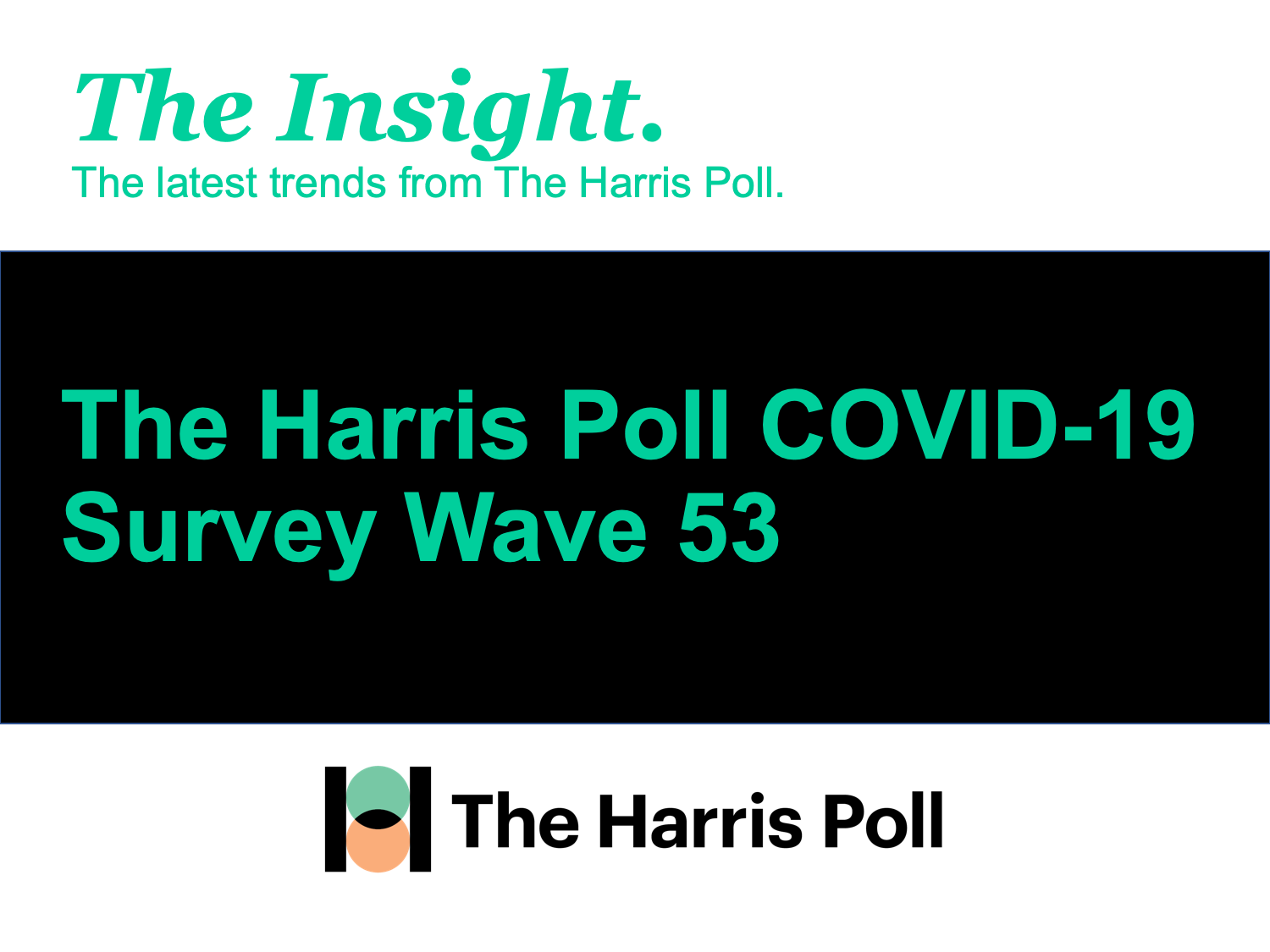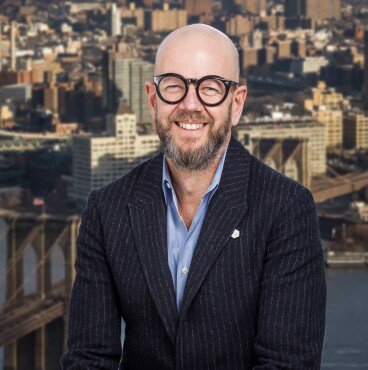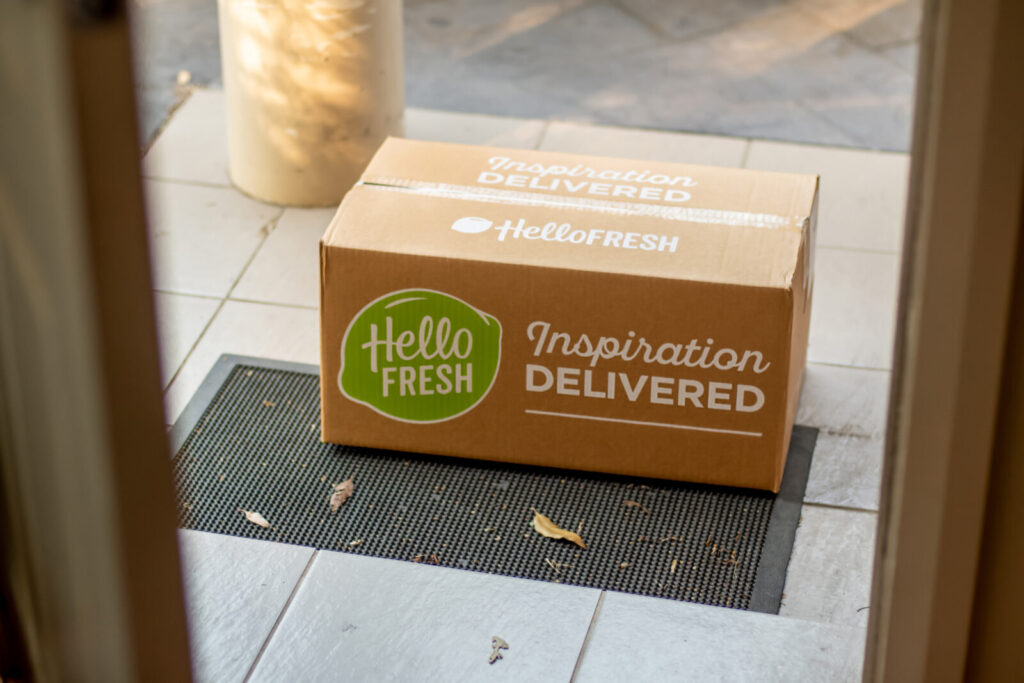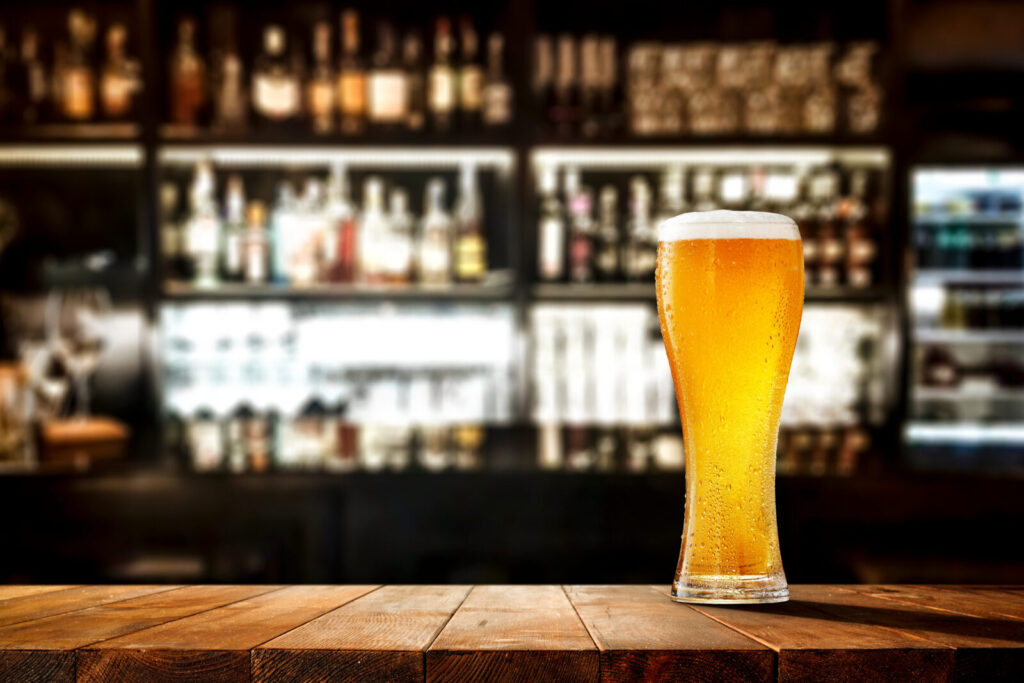Brief • 4 min Read

In The Harris Poll COVID-19 Tracker (Week 53) fielded February 26th to 28th, 2021 among 2,000 U.S. adults, we look at Americans’ cautious optimism that the end of the pandemic may be in sight, if NBA players would be effective ambassadors for the COVID-19 vaccine, the arrival of a third vaccine, workers who are looking to change their career during the pandemic, and what consumers think of the Burger King and McDonald’s rebrands.
As a public service, our team has curated key insights to help leaders navigate COVID-19. Full survey results, tables, and weekly summaries can be accessed for free at The Harris Poll COVID-19 Portal. We will continue to actively field on a regular cadence to track the shifts in sentiment and behaviors as the news and guidelines evolve.
An End in Sight?
Despite the U.S. reporting more than 65,000 new COVID-19 cases per day – comparable to last summer’s peak – many Americans are feeling (cautiously) optimistic about the direction of the pandemic as cases and deaths decline and the vaccine rollout gains steam. We look at how outlook on the pandemic has increasingly improved over the last month:
- Vaccine Momentum: two-thirds (66%) of Americans approve of how the vaccine rollout is being handled in the U.S., up 14-pts (from 51%) just a month ago. However, more than 4 in 10 (44%) still say the rollout is moving too slowly, down 8-pts (from 52%) just a month ago.
- A light at the end of the tunnel: three-fifths (62%) say the worst of the pandemic is behind us, up 28-pts (from 34%) on January 10th. And when asked if they can see a light at the end of the pandemic’s tunnel or if we’re still too far away, a similar number (58%) say they can see the light.
- But Americans remain cautious: more than two-thirds (69%) remain concerned about a new wave of the virus, down 12-pts (from 81%) on December 23rd and just under half (46%) say they remain concerned they could lose their job due to the pandemic.
- “Normal” is still far off: today, only (31%) feel comfortable visit friends or family without a mask (up 7-pts from January 10th); (26%) feel comfortable eating indoors (up 6-pts); and (21%) feel comfortable shopping in a store without a mask (up only 3-pts).
- Roadmap to normal: as Axios notes, states such as Colorado are already setting a timeline for a return to normalcy, which even includes crowds in some capacity at famed concert venue Red Rocks.
- The Atlantic looks at the pivotal question “at some point – maybe even soon – the emergency phase of the pandemic will end. But what, exactly, is that magic threshold?”
Takeaway: After a devastating winter, the notable decline in cases and deaths alongside an increasing supply of vaccines is certainly cause for optimism. However, the road ahead remains difficult and many public health officials remain concerned about a surge in new cases and deaths as well as what new variants could mean for vaccine efficacy.
Most Think It’s a Good Idea to Give NBA Players Early Access to Vaccine: Axios-Harris Poll
NBA players are expressing apprehension about accepting the league’s offer to provide early early access to COVID-19 vaccines in an effort to build trust and acceptance of the vaccine among its fans, especially among younger generations and Black communities who are more hesitant to take the vaccine. We asked Americans if they think it’s a good idea and our findings were featured exclusive in Axios.
- More than half (54%) of Americans think it would be a good idea to give NBA players early access to the COVID-19 vaccine in order to increase public confidence in it, including (61%) of Gen Z; (69%) of Millennials, and (61%) of Black Americans.
- NBA players can reach core audiences (39%) said they’d be more comfortable getting the vaccine if NBA players publicly received it first, led by (78%) of Gen Z; (59%) of Millennials, (55%) Black Americans, and (54%) of Asian Americans.
- They might get some off the sidelines: Half (51%) of those who say they will “wait awhile and see” and (29%) of those who say they won’t take the vaccine say they’d be more comfortable (vs 33% who say they’ll go the first day they can).
- The One Shot NBA Players Might Not Take: The Wall Street Journal explores vaccine hesitancy among major league athletes as NBA, NFL, and MLB players as their leagues try to persuade them to take the vaccine.
Takeaway: Earning the trust of Americans who are hesitant to take the vaccine must involve a portfolio of tactics to address different constituencies and meet them where they are. Influential public figures such as professional athletes who appeal to vaccine-hesitant communities like younger Americans (35% of Gen Z and 34% of Millennials are not likely to take the vaccine) and Black Americans (36% not likely) will be a critical part of the vaccine campaign.
A Third Vaccine Arrives
At the end of last week, the FDA approved a third COVID-19 vaccine – this one a single dose shot from Johnson & Johnson. And yesterday, the federal government announced a deal in which Merck will help to produce additional doses of the J&J vaccine. We asked Americans what they think about the new vaccine:
- Three-quarters (74%) of Americans have heard a little or a lot about the J&J vaccine, with Boomers (84%) and Democrats (81%) the most aware.
- Despite the J&J vaccine’s 100% efficacy at preventing hospitalization and death due to COVID-19, many remain skeptical – similar to our polling on the Pfizer and Moderna vaccines: only about three-quarters think J&J’s vaccine is effective at preventing hospitzation (78%, with only 38% saying very effective), dying (76%; 37% very effective), and catching and transmitting the virus (75%; 27% very effective).
- Most think J&J is as effective as Moderna, Pfizer: despite coverage around J&J’s lower efficacy rate, (39%) say they think it is just as effective as Moderna and Pfizer vaccines, while (21%) say it is more effective. Only (19%) say it is less effective; (21%) aren’t sure. Though Boomers are skeptical: (27%) of Boomers say J&J is less effective, vs (10%) of Gen Z and (11%) of Millennials.
- Less effective label likely isn’t a problem: Even after learning that J&J’s single dose shot is less effective than the double dose Pfizer or Moderna vaccines, (64%) say they would be willing to get the J&J if offered to them.
Takeaway: Johnson & Johnson’s vaccine arrives as America moves into the middle portion of its historic vaccination campaign and is a critical piece of President Biden’s announcement yesterday he expects enough vaccine doses for all adult Americans by the end of May. And the public are buying it: following the J&J news, (69%) of Americans are optimistic anyone who wants a vaccine will be able to get one by the end of this summer.
Workers Are Looking for a Career Change: Fast Company-Harris Poll
It looks like it may be time for a career change for many, according to a recent Fast Company-Harris Poll, which found over half (59%) of middle-income workers said they’re thinking about changing jobs. Unsurprisingly, remote work may be a driving force.
- The job hunt is on: The majority (52%) of U.S. workers are considering a job change this year, and as many as (44%) have actual plans in place to make the leap.
- Managers and highly skilled workers are also prepared to change jobs. Close to half (48%) of six-figure salaried workers are plotting their switches and as many as (66%) of them are feeling more confident about their decision to change jobs than they did six months ago.
- Remote options are key: Remote work and work-from-home options are valued by 68% of currently employed workers, and 43% of women asserted that these options are “very important,” versus (33%) of men.
- Flexibility is a priority: Eighteen percent of workers said they’d prefer to have more flexible hours in a new job.
Takeaway: The pandemic has changed the way we think about home and work life, and is unsurprisingly showing employees and employers that it will be important to embrace flexibility going forward. One thing seems to be clear, many Americans are ready for a new career and the pandemic has offered the leverage for them to prepare to make that jump.
Burger King’s New Look Edges Out McDonald’s: AdAge-Harris Poll
The latest Ad Age-Harris Poll asked U.S. consumers about the new looks that both McDonald’s and Burger King unveiled for 2021. Although McDonald’s remains the market leader by a wide margin, this early survey found Burger King’s fresh packaging design edging out the overhaul announced last week by McDonald’s.
- Burger King is crowned the king: More than half (54%) of respondents said they preferred Burger King’s packaging, while (46%) chose McDonald’s. In addition, (56%) said Burger King’s new look made the food look more appetizing, while (44%) picked McDonald’s as having the more appetizing design.
- The new packaging shows signs of potentially improving sales: More than (40%) of those who like the new looks presented by Burger King or McDonald’s say they are more likely to patronize the chains. This impact was most pronounced among consumers in the 35-44 age range (66%) of consumers in that group who preferred Burger King’s new design say they are more likely to buy its products, while (62%) who preferred McDonald’s new look said the same.
- Retro is in: 16 consumers specifically mentioned “retro” and five mentioned “nostalgic” or “nostalgia” when asked what Burger King’s packaging designs made them think of, vs. only six who said the same of McDonald’s. A 63-year-old woman said Burger King’s new look made her think of “the groovy sixties” and felt McDonald’s was “clean and simple.”
- Men and women differ on the new looks: women are nearly evenly divided with half (51%) of women picking Burger King over McDonald’s. Burger King’s lead grows with men, with (57%) of them preferring it.
Takeaway: Although Burger King is seeing some early enthusiasm for their packaging redesign, this alone won’t be enough to boost them to the share that McDonald’s owns. What is key for both brands is that large numbers of consumers said they are more likely to buy their products: (48%) of consumers who preferred Burger King’s new design said they’re more likely to buy its products and (41%) of those who preferred McDonald’s new design said they’re more likely to buy McDonald’s products. That alone shows early successes for both brands’ new looks.
Subscribe for more Insights
Subscribe to our newsletter for the latest trends in business, politics, culture, and more.
Download the Data
This survey was conducted online within the U.S. by The Harris Poll from February 26 to 28, among a nationally representative sample of 2,000 U.S. adults.
Download
Subscribe for more Insights
Subscribe to our newsletter for the latest trends in business, politics, culture, and more.
Download the Data
This survey was conducted online within the U.S. by The Harris Poll from February 26 to 28, among a nationally representative sample of 2,000 U.S. adults.
DownloadRelated Content








